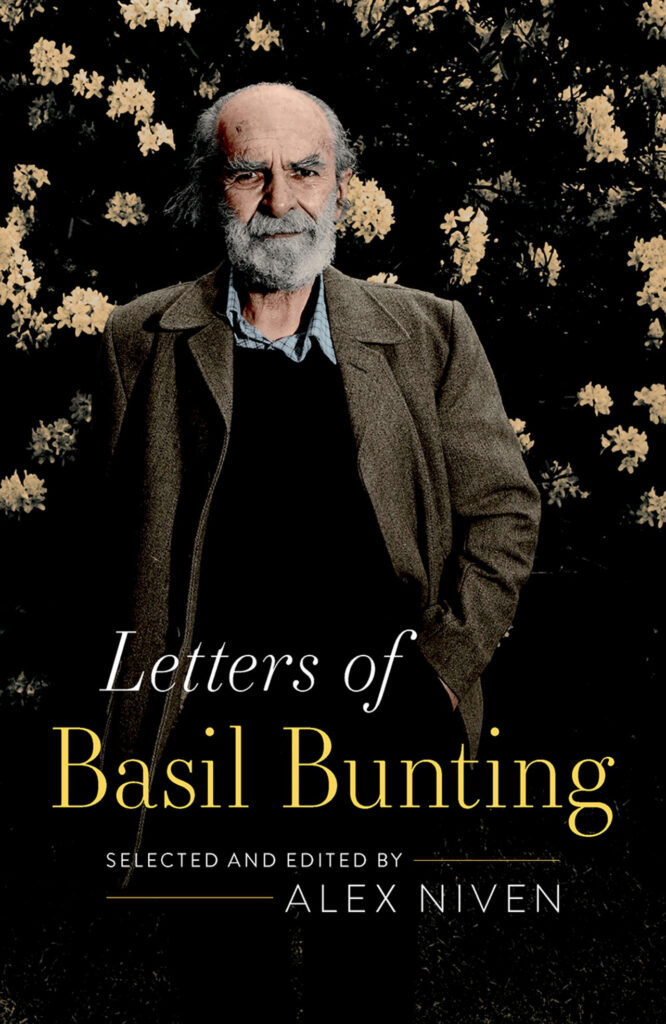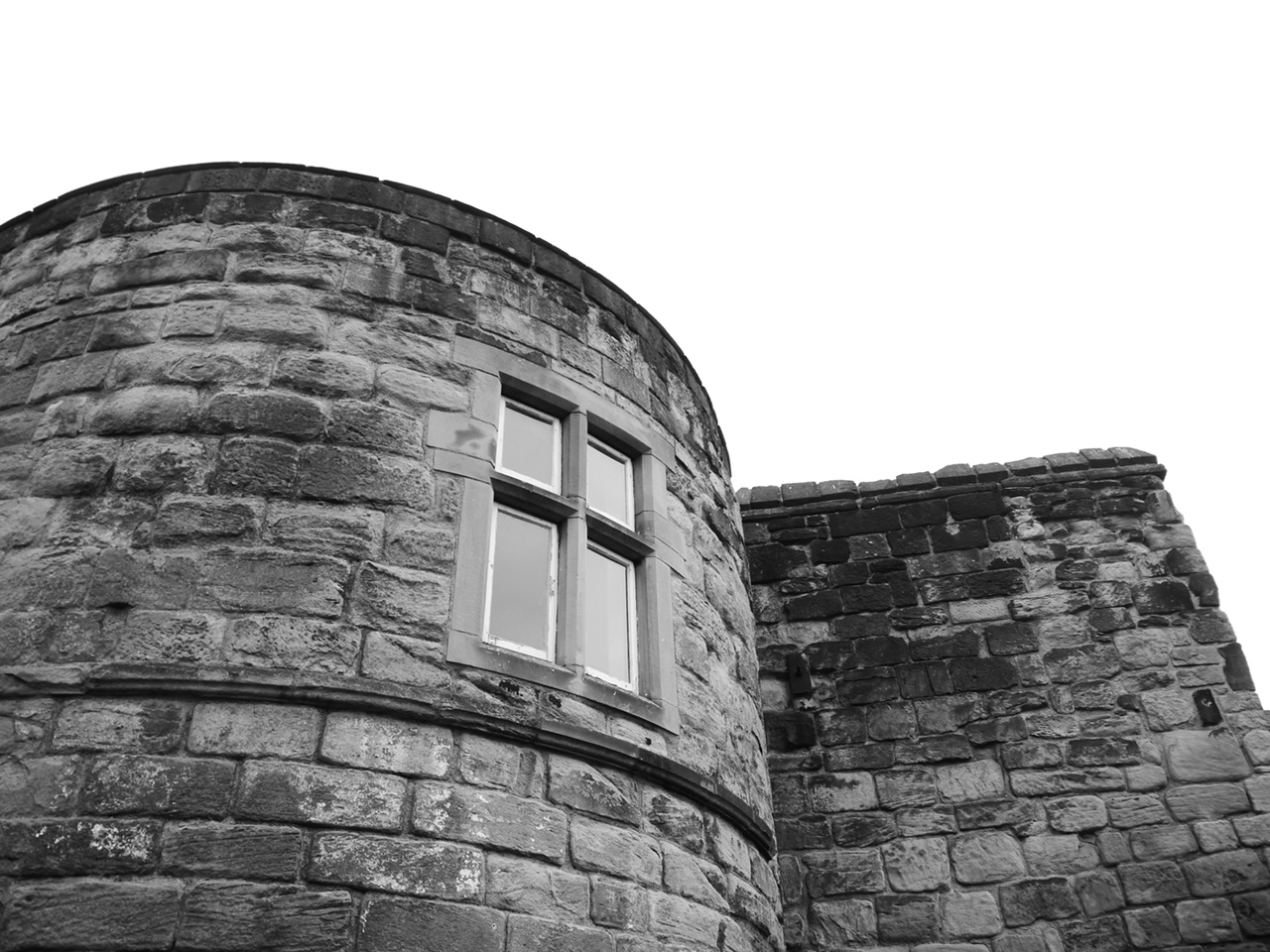Tower of influence
Basil Bunting would have been a footnote in the history of interwar literature were it not for a vibrant beat poetry scene in Newcastle
On the evening of 22 December 1965, Basil Bunting, an ageing journalist from Newcastle upon Tyne, made his way up a battered stone staircase in the city’s old medieval walls. When he reached the top, he opened a large wooden door and stepped into a small candlelit room filled with young people.
The story of how this 65-year-old Northern hero arrived in this peculiar building is remarkable – even a little improbable. Over the last 18 months this stretch of Newcastle’s town walls, the Morden Tower, had been transformed into an unlikely centre of countercultural activity.
From June 1964 a young local couple, Connie and Tom Pickard, had started to use it as a venue for poetry readings. Inspired partly by American Beat poetry – and by emerging scenes in Glasgow, Edinburgh and Liverpool – the Pickards built up a live venue that breathed life into the culture of a city still searching for a future on the other side of the Industrial Revolution. In the words of Allen Ginsberg, a famous early headliner, “The magic enacted in the Tower articulated the unconscious of the entire city slumbering in the mechanic illusions of the century.”
Attracted by its growing international reputation, an array of stellar poets from all over the world would make the journey to Newcastle, standing at the centre of the tower’s upstairs room as they intoned their energetic, freewheeling, often highly formally intricate poems. Meanwhile, gathered on the floor around them, and in keeping with the populist mood of the mid-1960s, sat an audience comprising “half academics, half teenagers, with a sprinkling of thugs”.
At times this crowd would include the Pop artist Richard Hamilton (then a Newcastle University lecturer) and future rock musicians Bryan Ferry and Wilko Johnson. But far more important than these soon-to-be famous figures were the mostly anonymous young women and men who sat on the floor of Morden Tower – people who were, for the most part, experiencing modern poetry for the first time in a strikingly immediate and vital way.
As Tom Pickard would later put it, these members of the audience were “genuine people”. More to the point, they were “delinquents” with “no literary ambitions”. Perhaps this was what Ginsberg meant when he talked about the magic enacted in the Tower.
At the centre of this strange scene was Bunting. A regular attendee of the Morden Tower readings from day one, he had been coaxed back into creativity in recent months, largely through the influence of the Pickards and their friends. In the 1930s, he had been a key figure in a second wave of modernist poetry, which followed in the wake of the earlier, pioneering experiments of Ezra Pound, TS Eliot and William Carlos Williams.

But since then events had conspired to exile him to the literary margins. Prior to being “rediscovered” by Tom Pickard in 1964, Bunting had written only a handful of poems since the late 1930s (and none at all since 1951). If he hadn’t encountered the Morden Tower and its youthful culture at this point, he would probably have retired from his humdrum job in local journalism the following year, to become a minor footnote in the history of interwar literature.
But the magic of the Tower had rubbed off on Bunting. On this cold evening in the last fortnight of 1965, he would make a belated breakthrough, one that would dramatically change not just his own life but also the wider history of poetry in English. After climbing the steps of the old city walls and opening the door to a candlelit room smelling of incense and cigarette smoke, Bunting took off his greatcoat and stood in front of the by now familiar throng of teenage delinquents. Then, in a thrumming, melodious voice, he started to read aloud a new modernist long poem for the first time:
Brag, sweet tenor bull,
descant on Rawthey’s madrigal,
each pebble its part
for the fells’ late spring.
The new work was called Briggflatts – one of the most epic pieces ever to be written about the North of England – and its flight into the air was one of the seminal moments in twentieth-century poetry.
But who exactly was Bunting? And why is his example so important in the history of Northern culture?
Born in 1900, “amid rejoicings for the relief of Ladysmith during the Boer War”, Bunting grew up in Newcastle during its Edwardian heyday. The son of a Derbyshire doctor and a mother from a North East mining family, he had a fairly typical middle-class childhood, before being packed off to Quaker boarding schools in Yorkshire and Berkshire (it was during his school days that Bunting apparently first realised that there was “some great underlying difference between North and South”).
Having absorbed Quaker ideals in his formative years, soon after turning 18 in the spring of 1918 Bunting refused to serve as a combatant in the last months of the First World War and was sent to Wormwood Scrubs for his troubles. Here he was kept in solitary confinement, naked, in a pitch-black cell with no furniture. According to Bunting’s friend, the London poet Denis Goacher, this experience “embittered him for life” and “coloured all he thought about England, about the Establishment, the ‘Southrons’ as he called us”.
Perhaps understandably, after leaving prison in 1919, Bunting became an angry young man in the classic mould. Integrating with London bohemia, he dabbled with the progressive politics of the Fabian Society and its offshoots. But it was literature that would provide a more lasting medium for developing his burgeoning radical instincts. Moving to Paris in the early 1920s, he met Ezra Pound – the controversial godfather of modernist poetry – and from this point on Bunting would become an iconoclastic poet in the style of writers like Pound and his collaborator Eliot.
But, perhaps because of his outsider status as both a Northerner and an experimental modernist, Bunting found it difficult, if not impossible, to break into the conservative English literary scene in the 1920s and 1930s.
After repeated failed attempts to find a publisher in the run-up to the Second World War, Bunting returned to Newcastle to train as a sailor, then joined the RAF in the early 1940s. Eventually, he rose to the rank of wing commander, remaining in Iran in the post-war years, where he worked as a journalist and British intelligence officer (in somewhat controversial circumstances which are yet to be fully examined).
Having wandered into a different way of life entirely from his origins in 1920s bohemia, it was both extraordinary and moving that Bunting was finally able to achieve literary success in the 1960s, after a gloomy decade spent working on the finance section of the Newcastle Evening Chronicle following the end of his spell in the Middle East.
Given that he had been rescued from obscurity by Connie and Tom Pickard and their gang of delinquent Geordie hippies, it was hardly surprising that Briggflatts – the major poem that emerged from Bunting’s revival period – was in part a lyrical celebration of Northumbria (which in his definition included pretty much the whole of the North of England).
A so-called “short-long” modernist poem, which loosely resembles Eliot’s famous work The Waste Land in its form and structure, Briggflatts narrates episodes from Bunting’s own life, interspersed with flashbacks to key episodes from Northern history. These include the death of the Viking warrior Eric Bloodaxe on Stainmoor in the 950s, the life of the early-medieval Northumbrian saint Cuthbert, and the creation of the Lindisfarne Gospels (a beautifully illuminated seventh century book which is one of the great treasures of Northern culture).
But although it brought Bunting moderate fame and success when it was published in 1966, there is still a sense that Briggflatts is not nearly as well-known a poem as it should be – perhaps in part because it is such a quintessentially Northern work, which deliberately places itself outside and against the conservative traditions of English literature.
Thankfully, there are signs that more and more 21st century readers are rediscovering the poem – and learning of Bunting’s remarkable life story, which stands as a permanent testament to the ways in which Northerners tend to do things differently to the rest of England.
The last decade has seen the publication of a major biography of Bunting and a definitive collected edition of his poems, as well as the appearance of songs (such as Mark Knopfler’s haunting 2015 ballad Basil) and novels (Andrew Miller’s The Slowworm’s Way, published this year) which pay tribute to Bunting’s legacy in implicit or explicit ways.
This summer, after many years of labour, my own Bunting-related book – a first selection of his letters – will be published. More than anything, I hope that the many insights we get in Bunting’s letters into the trials and triumphs of this extraordinary Northern life will help to win him the wide readership and posthumous acclaim he deserves. n
Letters of Basil Bunting edited by Alex Niven is published by Oxford University Press (£35.00)

Leave a reply
Your email address will not be published.